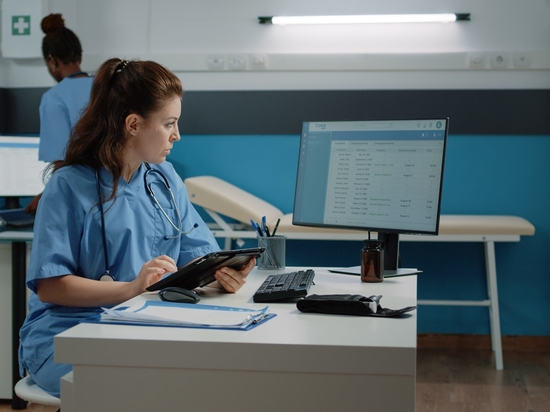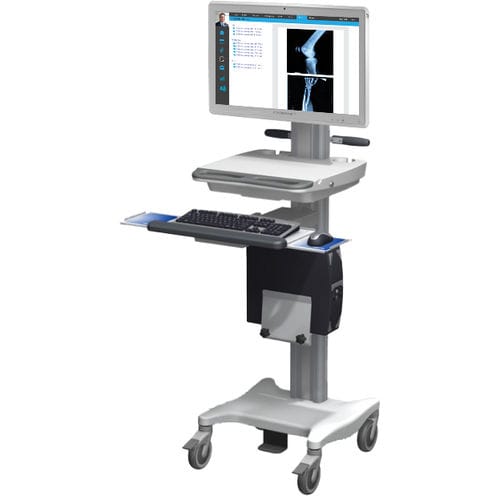
#Product Trends
The Role of Medical Carts in Today’s Modern Healthcare System
How these mobile storage units are vital in keeping patients alive.
Medical carts are an important tool in today’s healthcare. They make access to important drugs and vital equipment within easy reach of hospital staff. We go into detail about them today, from what they do, the different kinds, and how they’re essential in the care of patients.
What Are Medical Carts?
Medical carts are, simply, mobile storage units. They play a vital role in healthcare as facilities use them to store and transport medicines, medical supplies, and emergency equipment, all within easy reach.
Different Kinds of Medical Carts
A medical equipment cart gives providers, medical personnel, and caregivers immediate access to a patient’s medications and other supplies.
They’re highly mobile, being lightweight and wheeled. This makes it easy for staff to bring them where needed.
They’re very customizable. There’s a medical cart specialized for almost any need and want in healthcare. This is especially true for hospitals. Examples include:
Anesthesia Carts
These medical rolling carts are used by the anesthesiology department to organize and store tools to aid medical staff to obtain the exact drug needed. Many anesthesia carts have multiple security and tracking mechanisms for their carts due to the potentially lethal medications and narcotics used in the medical specialty.
Bedside Carts
These carts allow providers and support medical personnel to directly care for patients at their side. This saves on extra trips to the supply cabinet or nursing station. Common medications like non-prescription pain relief may be found in most bedside carts as well as sterile gloves, band aids, etc.
Many bedside carts can also transport medical computers in a similar fashion as a workstation on wheels. This allows staff like nurses to update the patient’s electronic medical records (EMR) at their bedside.
Crash carts
Crash carts, also called “code carts'', are probably the most well-known medical carts. They house any necessary medication and equipment to deal with life-threatening emergencies like heart attacks. Examples include a defibrillator, cardiac drugs, and endotracheal intubation medical devices.
Medication Carts
These medical rolling carts store regularly used medications for a particular department like a hospital ICU. Again, this helps staff save on trips to storage facilities, the nursing station, or the on-site hospital pharmacy. Many medication carts have features like self-locking drawers to keep their contents as secure as possible.
Point of Care (POC) Carts
Medical staff roll these carts to a patient’s side when there’s a need for diagnostic testing. They come with various storage units to house the medical test materials while providing containers for blood samples and the like to be transported to the hospital lab. POC carts, like bedside carts, can be equipped with a medical computer to make updating the patient’s EMR a breeze. Medical computers equipped with hot-swappable batteries are especially ideal for POC carts as they can power any necessary equipment like barcode scanners.
Treatment Carts
Treatment carts transport biohazard, contagious, and similar hazardous waste products safely through a hospital to the proper disposal facilities.
Other medical carts include isolation carts, IV carts, and transfer carts.
What Makes Up a Medical Cart
Medical carts are highly specialized for healthcare facilities. They cannot be simply purchased at the local supply store.
They have distinct characteristics which include:
Be lightweight to allow easy movement throughout the facility or ward. At the same time, they must be strong to deal with daily accidental bumps and scrapes.
Each cart should be collapse-resistant to prevent damage to equipment and medical supplies. Carts should also pass impact testing to ensure they can withstand both accidents and general wear and tear.
Shelves and drawers must be durable enough to tolerate constant use and product weights.
Wheels must swivel and move as intended under load and should include a locking and braking system.
A proper venting system should be in place to avoid overheating of medications or electronic medical devices.
Manufacturers must ensure the locks on their carts are tamper resistant to prevent unauthorized persons from accessing medication and hazardous materials.
To meet the above requirements, medical carts are offered in various material like:
Medical grade PVC Plastic
Mild Steel
Poly-Aluminum
Stainless steel
Wood laminate
Many medical carts are medical grade. This means they have been tested and certified to be safe near patients (Safety 60601-1 and EMC 60601-1-2). They will not interfere with potentially life-sustaining or saving nearby medical devices, nor cause hazards like a fire, electrical shocks, or excessive radiation.
This is important. The US Food and Drug Administration (FDA) considers many hospital carts to be medical devices if they fall under section 201(h) of the Federal Food, Drug and Cosmetic Act. The above anesthesia cart, for example, is most likely battery powered and has a potential ignition of flammable anesthesia gas if not medical grade. This is the same with a crash cart. The latter, however, would be medical grade since it’ll be equipped with conductive wheels to collect and return any static electricity generated while the cart’s moving across the floor. This shields the vital electronics within the cart.
Closing Comment
Medical carts play an important role in the healthcare industry as they provide easy reach for medical staff to necessary medications and vital equipment.
Contact an expert at Cybernet if your healthcare group is looking for the right medical equipment optimized to work with your medical carts.







